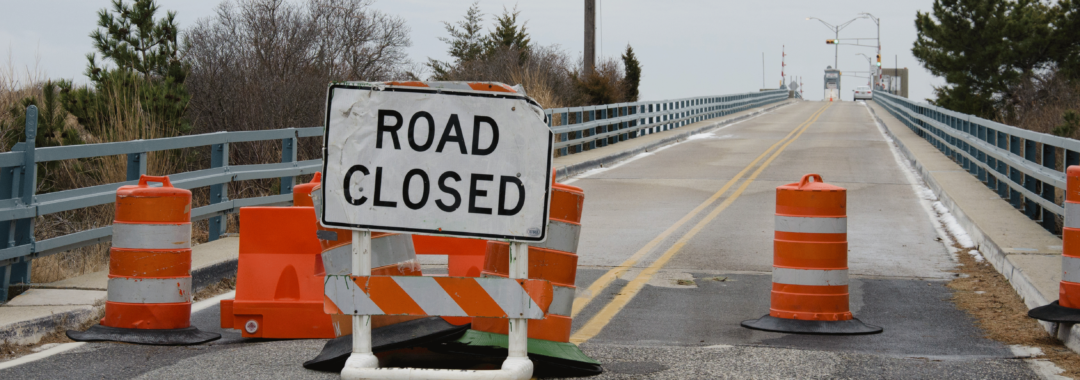The New Jersey Transportation Infrastructure Bank (NJTIB), designed to help the state fix its aging infrastructure, improve pedestrian safety, and advance the movement of passengers and goods, is now open for business and accepting applications.
The NJTIB is a joint program between the New Jersey Department of Transportation (NJDOT) and the New Jersey Infrastructure Bank. Its mission is to reduce the cost of financing engineering, design, and construction of critical local transportation projects by providing and administering extremely low interest rate loans. The NJTIB expects to fund its first loan by the end of 2018. In April, the New Jersey legislature approved $22 million in funds for the NJTIB to use in 2019.
NJTIB Executive Director David Zimmer compared the new resource to the New Jersey Water Bank (NJWB), which it closely resembles and which he also directs. Established in 1987, the NJWB has distributed more than $7.2 billion in loans. New Jersey municipalities and counties familiar with the NJWB should find the online application process for the new NJTIB familiar since it is modeled on the one used by the NJWB. Early engagement by the NJTIB to inform local agencies about this new resource has reached about three-quarters of the state’s municipalities and counties and continues through a collaboration with the NJDOT Commissioner’s office.
The NJTIB is a much needed resource for financing New Jersey transportation projects. New Jersey’s transportation infrastructure is among the most heavily utilized in the nation, reflecting the state’s high population density. The ASCE’s New Jersey Section 2016 Infrastructure Report cited NJDOT data identifying roughly 42 percent of state roads and 9 percent of state bridges as structurally deficient. Overall, New Jersey received a D+ grade, indicating significant deterioration of a large portion of its infrastructure.
Zimmer noted that New Jersey municipalities and counties found it challenging to prioritize transportation after the economic recession, and lacked resources to support investment necessary to maintain transportation infrastructure at desirable levels. The NJTIB is “one piece of a bigger puzzle that the state has put together to address its transportation needs,” stated Zimmer.
Currently New Jersey utilizes its Transportation Trust Fund, funded by sales of vehicle fuels and lubricants as well as some toll road revenue, to finance construction of bridges, roads, and transit. The establishment of the new NJTIB provides eligible local government units an additional major financing resource. A borrower must be a municipality, county, a municipal/county or regional transportation authority, or any other political subdivision of the state authorized to construct, operate, and maintain public highways or transportation projects, or a consortium of such entities.
Eligibility
For projects to be eligible for NJTIB financing, they must meet the definition of a transportation project. Eligible improvements include public highways, bridges, approach roadways and other land-side improvements, ramps and grade crossings, signal systems, roadbeds, transit lanes or rights of way, and pedestrian walkways and bridges connecting to passenger stations and servicing facilities. Projects and programs designed to increase the movement of passengers and goods, and that may provide a safety and/or infrastructure preservation benefit with a goal of improving quality of life, can also be funded through the NJTIB. Among such projects are highway operational improvements, bottleneck improvements, missing links, major widening, intelligent transportation systems, and travel demand management.
Projects must also be placed on the Transportation Infrastructure Project Priority List (TIPPL) by the NJDOT Office of Local Aid and Economic Development on or before May 15 of each year. This list must be approved for inclusion in the annual appropriations act by the New Jersey Senate Budget and Appropriations Committee and Assembly Budget Committee. Only projects that are on the FY2019 TIPPL are eligible for 2019 NJTIB financing, though the list may be amended based on grant applicants and applicant withdrawals. At the present time, the FY2019 TIPPL lists 130 projects at a total cost of $267.5 million.
Prioritization
The NJDOT Office of Local Aid and Economic Development will also administer the Transportation Infrastructure Bank Priority System (TIBPS) and rank proposed projects for funding. The TIBPS currently assigns highest priority to projects that address structurally deficient bridges as identified by NJDOT Bridge Management System. Projects to improve pedestrian safety rank next. Lower ranked projects may also be approved based on availability of funds, compliance of program requirements and deadlines, and application submittal. The TIBPS will be published for the ensuing fiscal year on or before January 15.
The NJTIB and NJDOT have prepared a guidance document, New Jersey Transportation Infrastructure Financing Program: Project Prioritization System, Project Priority List, and Financial Plan, which includes the initial 2019 TIPPL, the methodology of the TIBPS, instructions on how to secure financing through the NJTIB, and loan terms and conditions. The document can be viewed here.
Photo credit: FEMA/Liz Roll. Bridge to Avalon and Stone Harbor after Hurricane Sandy, February 04, 2013.

